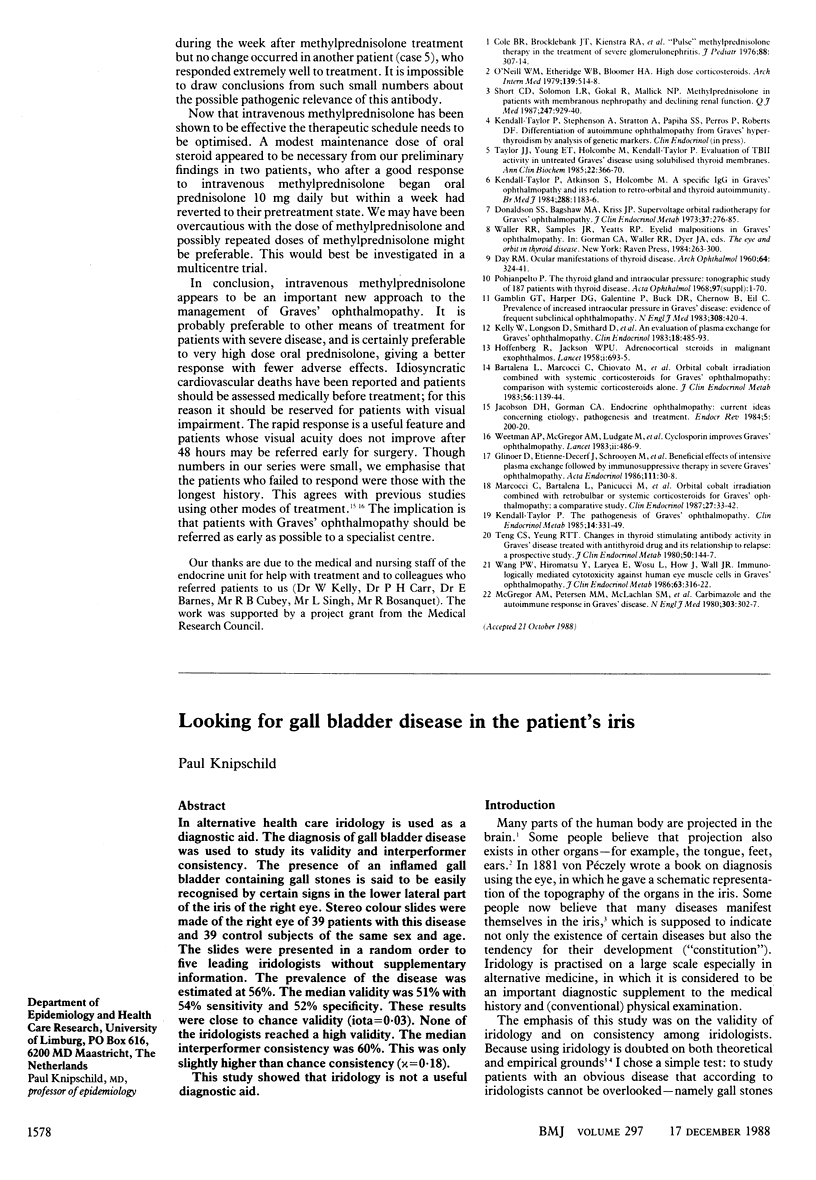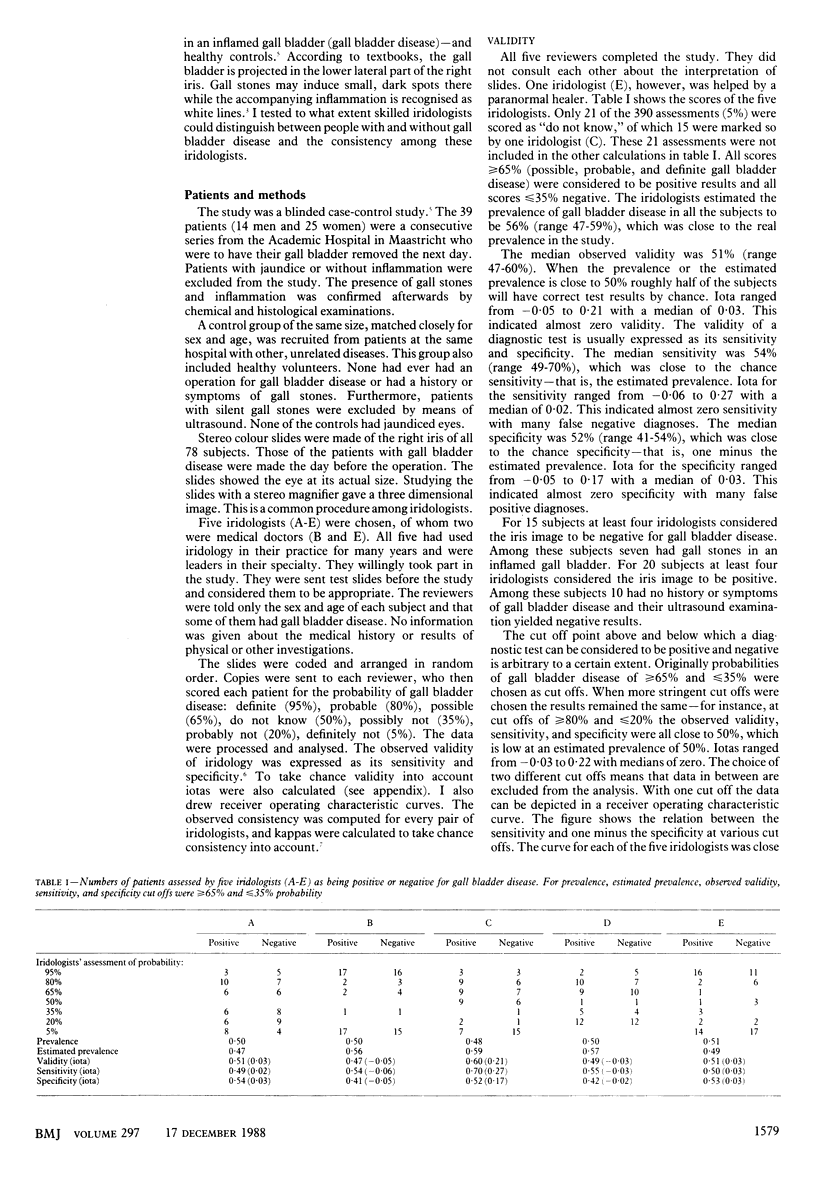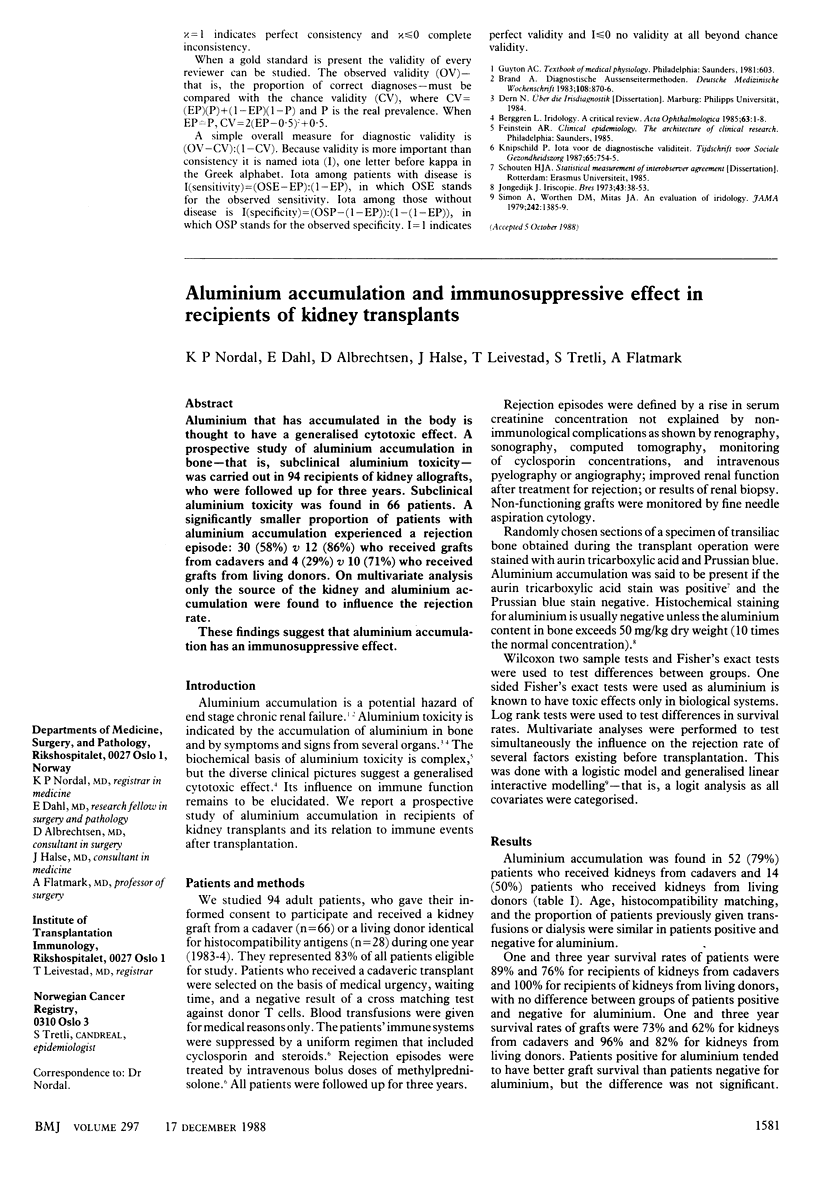Abstract
In alternative health care iridology is used as a diagnostic aid. The diagnosis of gall bladder disease was used to study its validity and interperformer consistency. The presence of an inflamed gall bladder containing gall stones is said to be easily recognised by certain signs in the lower lateral part of the iris of the right eye. Stereo colour slides were made of the right eye. Stereo colour slides were made of the right eye of 39 patients with this disease and 39 control subjects of the same sex and age. The slides were presented in a random order to five leading iridologists without supplementary information. The prevalence of the disease was estimated at 56%. The median validity was 51% with 54% sensitivity and 52% specificity. These results were close to chance validity (iota = 0.03). None of the iridologists reached a high validity. The median interperformer consistency was 60%. This was only slightly higher than chance consistency (kappa = 0.18). This study showed that iridology is not a useful diagnostic aid.
Full text
PDF



Selected References
These references are in PubMed. This may not be the complete list of references from this article.
- Brand A. Diagnostische Aussenseitermethoden. Dtsch Med Wochenschr. 1983 Jun 3;108(22):870–876. doi: 10.1055/s-2008-1069660. [DOI] [PubMed] [Google Scholar]
- Simon A., Worthen D. M., Mitas J. A., 2nd An evaluation of iridology. JAMA. 1979 Sep 28;242(13):1385–1389. [PubMed] [Google Scholar]


